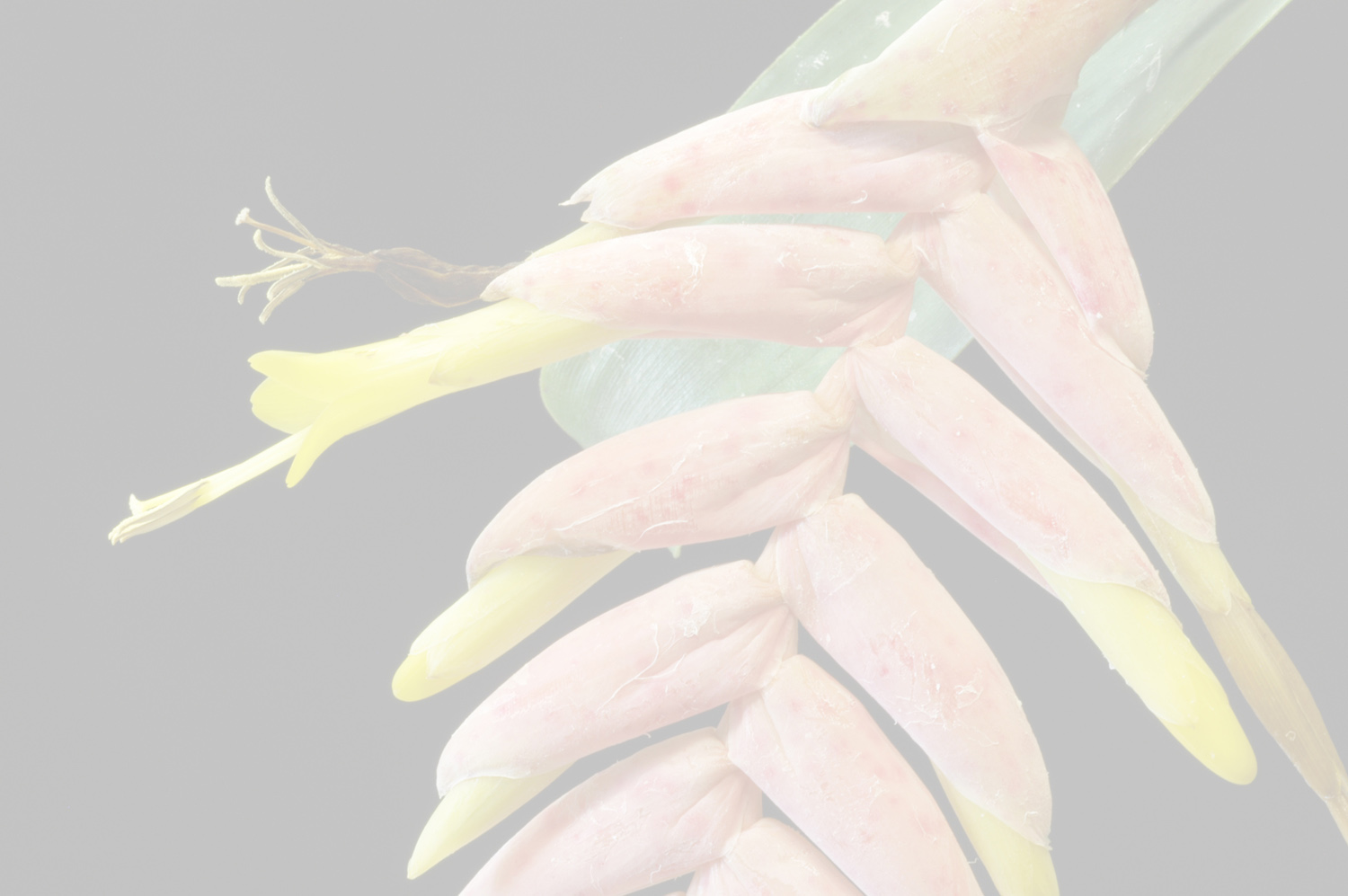

 Vriesea multifoliata Leme & G.K.Br.[as Vriesea multifoliata Leme & G.K. Br.]
Vriesea multifoliata Leme & G.K.Br.[as Vriesea multifoliata Leme & G.K. Br.]Diagnose: —Species nova a Vriesea harrylutheri Leme & G.K. Br. et Vriesea appariciana E. Pereira & Reitz, quibus affinis, foliis plus numerosis, laminis foliorum angustioribus, marginibus haud distincte truncatis, bracteis floriferis ecarinatis, medium sepalorum aequantibus, ovulis caudatis differt. Observations: —As a member of the Vriesea appariciana complex, V. multifoliata is a closer relative of V. harrylutheri and V. appariciana, but can be easily distinguished from them. In comparison to V. harrylutheri, this new species differs by the more numerous leaves (28 to 45 vs. 18 to 29), distinctly narrower leaf blades (2–2.5 cm vs. ca. 6.5 cm wide at base) with margins not truncate and less than 0.5 mm thick (vs. margins truncate, ca. 2 mm thick), floral bracts ecarinate (vs. obtusely carinate), equaling 1/2 of sepals length (vs. equaling 2/3), and by the caudate ovules (vs. apiculate to shortly caudate). When compared to V. appariciana, this new species is distinguished by the more numerous leaves (28 to 45 vs. 20 to 22), distinctly narrower leaf blades (2–2.5 cm vs. 3.5–5 cm wide at base) with margins not truncate (vs. margins truncate, ca. 1 mm thick), floral bracts ecarinate equaling 1/2 of sepals length (vs. equaling 2/3), and by the caudate ovules (vs. apiculate to shortly caudate). The living holotype descendant (cult. E. Leme 3484) is cultivated in the collection of the Refúgio dos Gravatás, in Teresópolis, Rio de Janeiro.Edited from (21-12-2014): Pereira 1971. (protologue) Species nova in Brasilia Bromeliacearum .